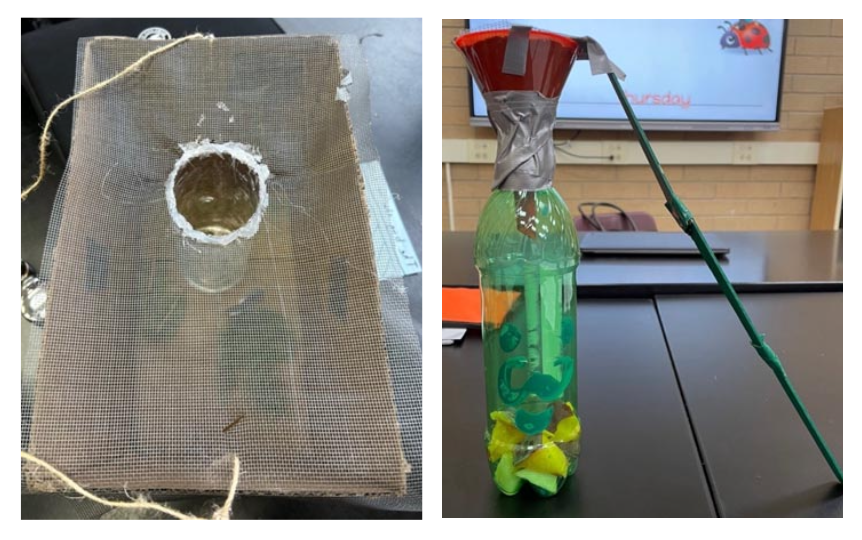Educating students about real-world, issues such as local invasive species aims to encourage wider engagement with STEM
Climate change and the COVID-19 pandemic are only two examples of global problems requiring help from STEM professionals. However, there exists a shortage in the STEM workforce(1) and less than 25% of youth show interest in pursuing STEM careers.(2)
Researchers and educators alike acknowledge the need to get more students interested in STEM. One response is to showcase real-world issues with tangible solutions. In many schools, students complete labs on topics such as chemical reactions or animal dissection. Although these topics are necessary in addressing real-world issues, they may not always help students recognize issues they can immediately take part in solving.(3)
Connecting with the local community about local invasive species
We created a curriculum to inform students about local invasive species and the potential disruption to ecological stability, economic growth, and health these species introduce. Not only did the study of local invasive insects help them learn about a problem in their immediate community, but it also showed them how they can be actively involved in addressing the problem.
Middle school students researched one of eight options of local invasive insects in groups of three to four students. They then designed and built traps using the engineering design process. These activities supported students as they researched, designed, built, and refined their solutions to eradicate one local invasive insect in their local area.
“I think the physical build was perhaps the most beneficial because they got to go through the engineering process and go back to certain parts and realise, ‘You know, this wasn’t going to be successful,’ so they had to kind of reverse it and redo their build.” – Teacher

Active participation
The students were provided with everyday materials to lure and capture their insects. Provided materials included low-cost items such as soda bottles, funnels, duct tape, and fruit, among other things. By encouraging students to build traps using everyday items, students could see how they could make an immediate impact without requiring specialised equipment or training.
“I think that it helped raise more awareness about all these [invasive] insects and stuff, and I guess just gets people more involved in actually trying to stop them.” – Student A (9th grade)

In addition to designing and building their traps, the students were given the option to place their traps outside their schools or homes. This allowed them to see whether their trap was effective in catching their invasive insect while also evaluating if it would potentially catch non-harmful native insects.
After completing their traps, the students also created informational materials to share with community members, scientists, and others. These presentations helped to increase awareness of the potential harm caused by local invasive insects as well as share examples of viable, low-cost solutions.
“If we get young people to get interested in that idea, and also actual scientists… we can fix the community together.” Student B (9th grade)
The future of STEM
Our work has helped us to realise tips for focusing classroom STEM activities on local phenomena so that the activities engage students’ interest and provide meaning and relevance to their STEM knowledge-building. In particular, we suggest four features for pre- university STEM programmes:
- Local issues: Engage students in solution-generation and interdisciplinary STEM knowledge-building centered on local, relevant challenges;
- Tangible solutions: Show students how they can be immediately involved in the solution rather than introducing material they can be involved in someday;
- Encouraging risk-taking: Empower students to brainstorm various designs and create and alter them to emphasise that solution generation is a creative process rather than a process that ends with their first or only one answer; and
- Distributed ownership: Require students to work together to research and devise a solution where everyone is actively involved in the process.

References
- Kramer, M.R., Tallant, K., Goldberger , A.O., & Lebus, F. (2015). The global STEM paradox. The New York Academy of Sciences.
- Mostafa, T., Echazarra, A., & Guillou, H. (2018). The science of teaching science: An exploration of science teaching practices in PISA 2015. OECD Education Working Papers, No. 188, OECD Publishing. https://doi.org/10.1787/f5bd9e57-en
- Bybee, R., & McCrae, B. (2011). Scientific literacy and student attitudes: Perspectives from PISA 2006 science. International Journal of Science Education, 33(1), 7-26. https://doi.org/10.1080/09500693.2010.518644

This work is licensed under Creative Commons Attribution-NonCommercial-NoDerivatives 4.0 International.


